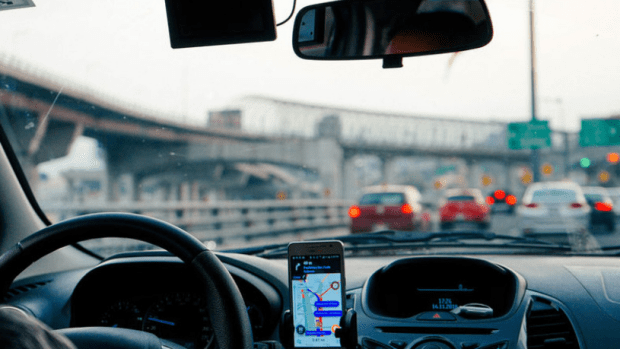Most Uber and Lyft trips aren't bolstering transportation options in transit deserts, but are being taken in majority white and more affluent neighborhoods, a new study reveals, debunking claims by the rideshare companies that residents of lower-income Black and Latino neighborhoods with sub-par public transportation access are using the services to fill gaps in the transit network.
Previous research has been mixed on whether ride-hail is complementing transit use, or simply cannibalizing it by replacing bus and train trips, but the new study, which analyzed patterns in Chicago, concluded that high numbers of trips most closely correlate with high neighborhood median household income rather than a dearth of transit service. Moreover, there weren’t a particularly high number of ride-hail trips to and from ‘L’ stations.
However, after controlling for neighborhood income, transit dependency, population density, and employment density, researchers Jesus Barajas of the University of California Davis Institute of Transportation Studies and Anne Brown of the University of Oregon School of Planning, Public Policy and Management found fewer ride-hailing trips in communities where bus use is more prevalent than train ridership, and significantly more ride-hailing trips in areas where 'L' use is more prevalent. These patterns were a little different for Uber and Lyft pick-ups on weekend nights.
Of course, the potential is there, even if it is not currently being realized.
“With the advent of ride-hailing services like Uber and Lyft… travelers now have a new potential to gain automobility without high car purchase costs and in the absence of reliable transit service,” the authors wrote in the study, “Not Minding the Gap: Does Ride-Hailing Serve Transit Deserts?”
The study asked two main questions:
- Where are the gaps in transit service in the city of Chicago and how are they distributed with respect to neighborhood sociodemographic characteristics?
- What is the spatial connection between transit service gaps, ride-hailing origins and destinations, and neighborhood composition?
To answer them, Barajas and Brown looked at Chicago transit and ride-hail data, finding evidence that, at a neighborhood scale, ride-hail doesn’t primarily serve to fill public transportation service gaps, but instead coexists with transit service as either a complementary or competing mode. The study only looked at CTA service, without factoring in data for Metra commuter rail, which is primarily geared towards suburbanites, but is also used by some city residents use for work commutes and other trips.
The researchers found that between Nov. 1, 2018 and Dec. 31, 2019, travelers completed more than 128 million ride-hail trips in the city of Chicago, or nearly 289,000 trips on an average weekday and over 335,000 trips on an average weekend day. The average trip distance was over six miles and cost about $12, excluding tip. The share of trips during peak periods (28 percent) and authorized as shared rides (21 percent) was on-par with Lyft trips in Los Angeles. Two-thirds of trips both started and ended within city limits.
The highest number of Uber and Lyft trips originated in the Near North Side community area, with 21.2 million trips (16.4 percent) beginning in this affluent downtown area, dense with retail and nightlife. The five other community areas with over 5 percent of trip origins included the Loop, Chicago’s central business district (9.0%); the Near West Side, which includes residential, commercial, and university uses (8.7%); and the relatively affluent neighborhoods of Lakeview (6.6%), West Town (6.2 percent), and Lincoln Park (5.4%), located near downtown and/or Lake Michigan. O’Hare Airport had 3.6% of trip origins. Destination patterns were similar.
Barajas and Brown ended by noting that more work is needed to determine exactly why Uber and Lyft use is so much lower in Chicago’s lower-income communities.
“Results are not necessarily evidence of discrimination or exclusion: fewer trips could result from either lack of demand or lack of supply (or both),” they wrote. “For example, existing modes — transit, walking, biking, and personal cars — may meet residents’ current travel needs.”
However, they note that discrimination may be a factor, as well as financial or technological barriers to ride-hail use, such as lack of a smartphone or credit card.







